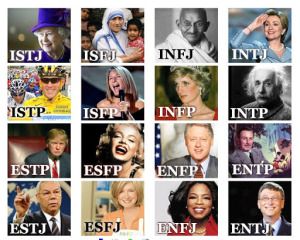
Often the greatest task in building and maintaining an effective and productive team is understanding the differences between, and the similarities of, your team members’ personalities. Each individual has distinct needs and behavioral preferences, just as each one brings different skill sets and experience to the table.
With the Myers-Briggs Type Indicator, we will uncover crucial aspects of your employees’ personalities. From this we can identify the best ways for you to communicate with them, and for them to communicate with each other, in order to enhance productivity and employee satisfaction.
The MBTI, as it is called, provides a solid psychological basis for understanding different personality types, and offers team building activities that can help members of your staff understand and appreciate one another. You and your staff will come to know each other in ways you never anticipated, and you will all benefit from it.
This assessment measures behavioral preferences along four dimensions, and helps individuals understand themselves and appreciate the people with whom they interact. The assessment can be completed within 20 minutes. Post-assessment discussion and exercises allow participants to gain greater insight into personal differences and similarities.
How does it work?
Here is an analogy. Let’s suppose that you and your team undergo an assessment that determines the following characteristics:
Tall……………………Short
Male………………….Female
Brown Eyed……….Blue Eyed
Republican…………Democrat
These are four dimensions of characteristics with eight components. People who undergo this form of assessment might see the following results:
Tall Female Brown-Eyed Democrat
Short Male Blue-Eyed Republican
Tall Male Blue-Eyed Democrat
Short Female Brown-Eyed Republican
And so on. There are 16 possible combinations. The same holds true for the results of the Myers-Briggs Type Indicator. But instead of focusing on physical attributes and political affiliations, the MBTI deals with the following:
—How we get our energy: from external sources and interaction with other people, or from within ourselves in moments of quiet and solitude
—What we pay attention to: the surrounding environment and sensory input, or gut instinct and visualization
—How we make decisions: in terms of logic, numbers, and facts, or in terms of feeling and consideration of the effects of our actions on others
—How we want our environment to be: highly structured and well organized, or loose and go-with-the-flow
After learning about one’s own preferred behavioral style, participants learn to communicate with others in a way they’d like to be communicated with. Moving beyond the traditional Golden Rule of “Treat others the way you’d like them to treat you,” the MBTI helps create an understanding of the Platinum Rule: “Treat others they way they want to be treated.”
Pat Breslin is a licensed administrator for the MBTI.

